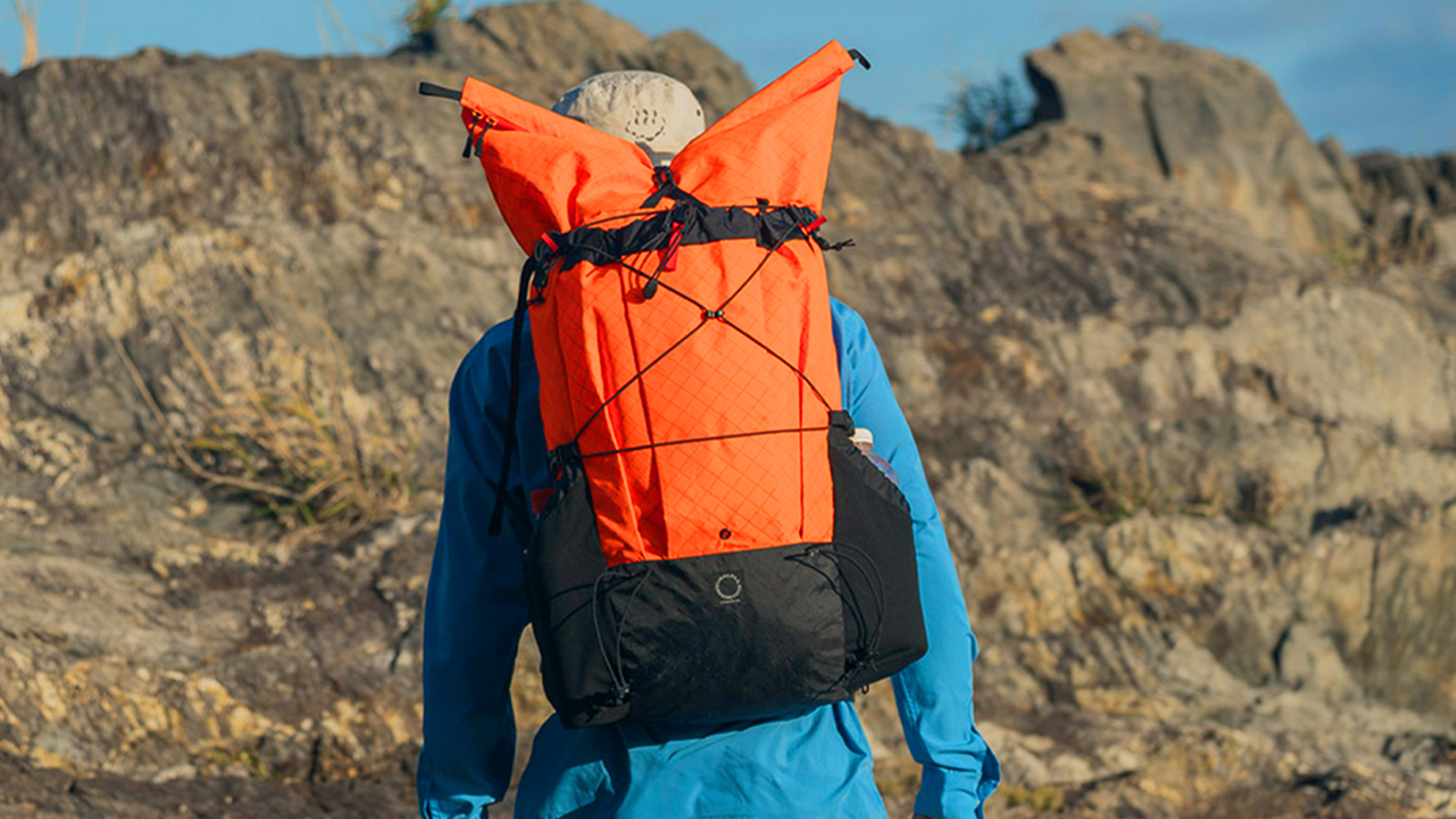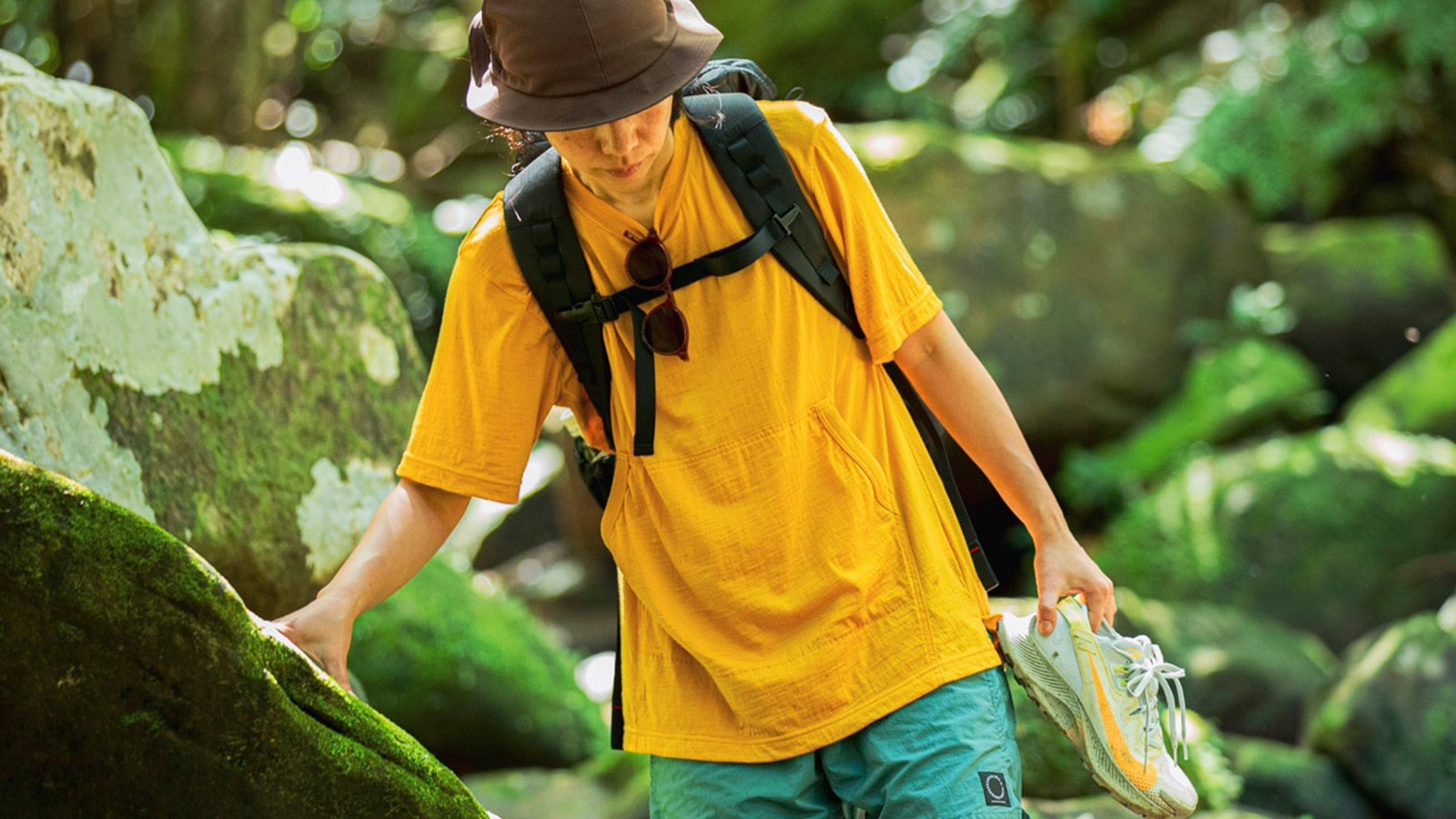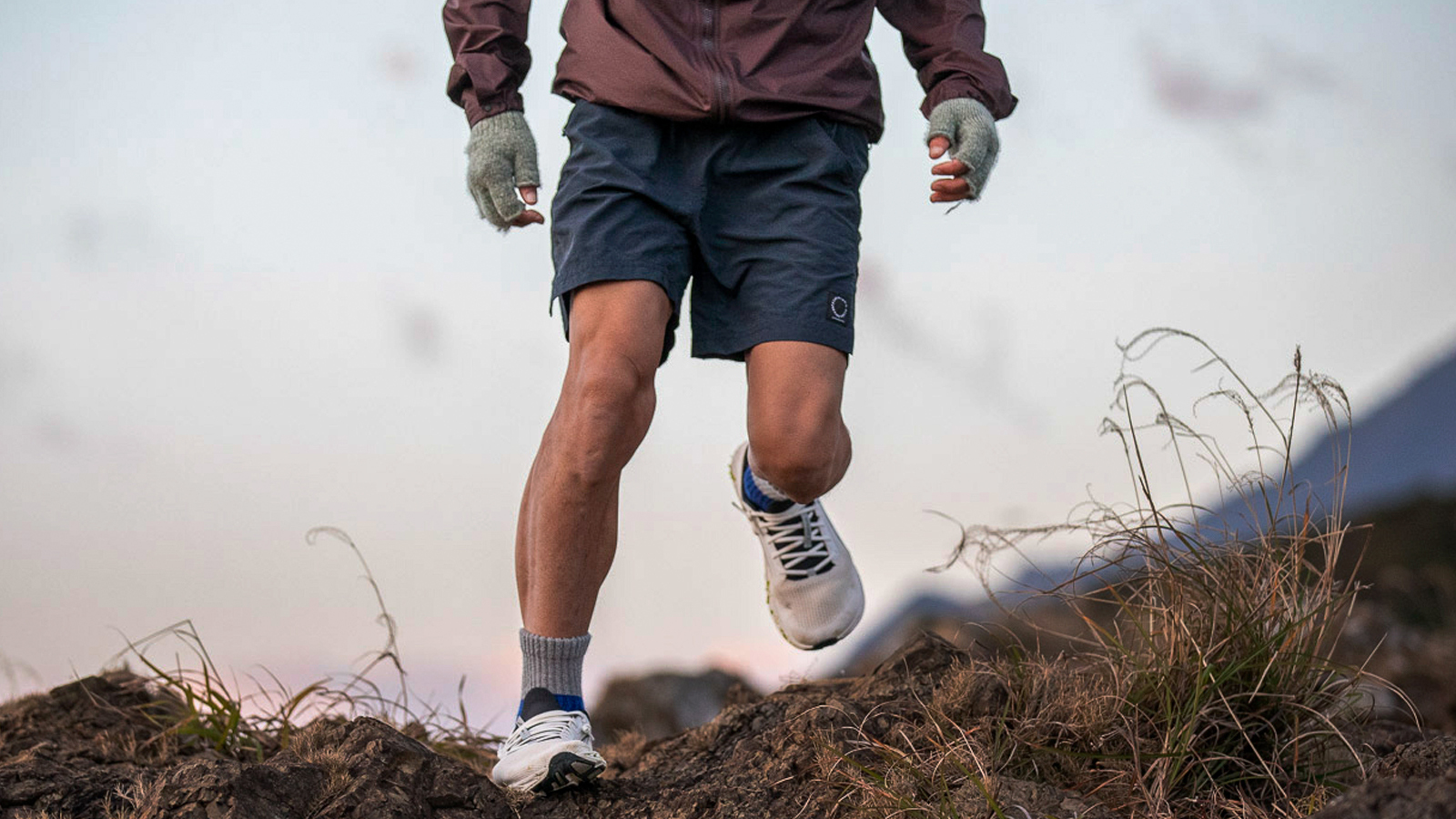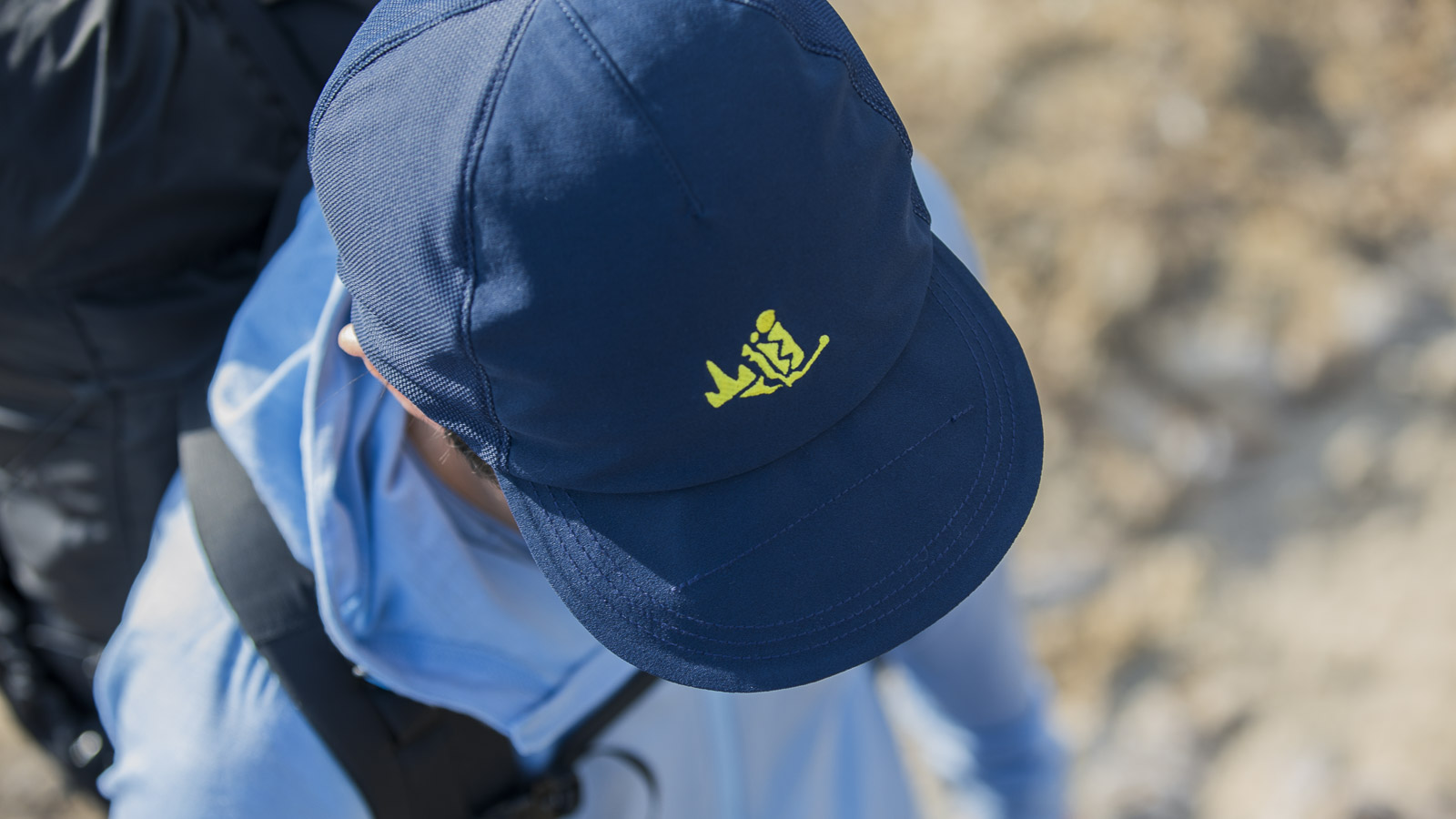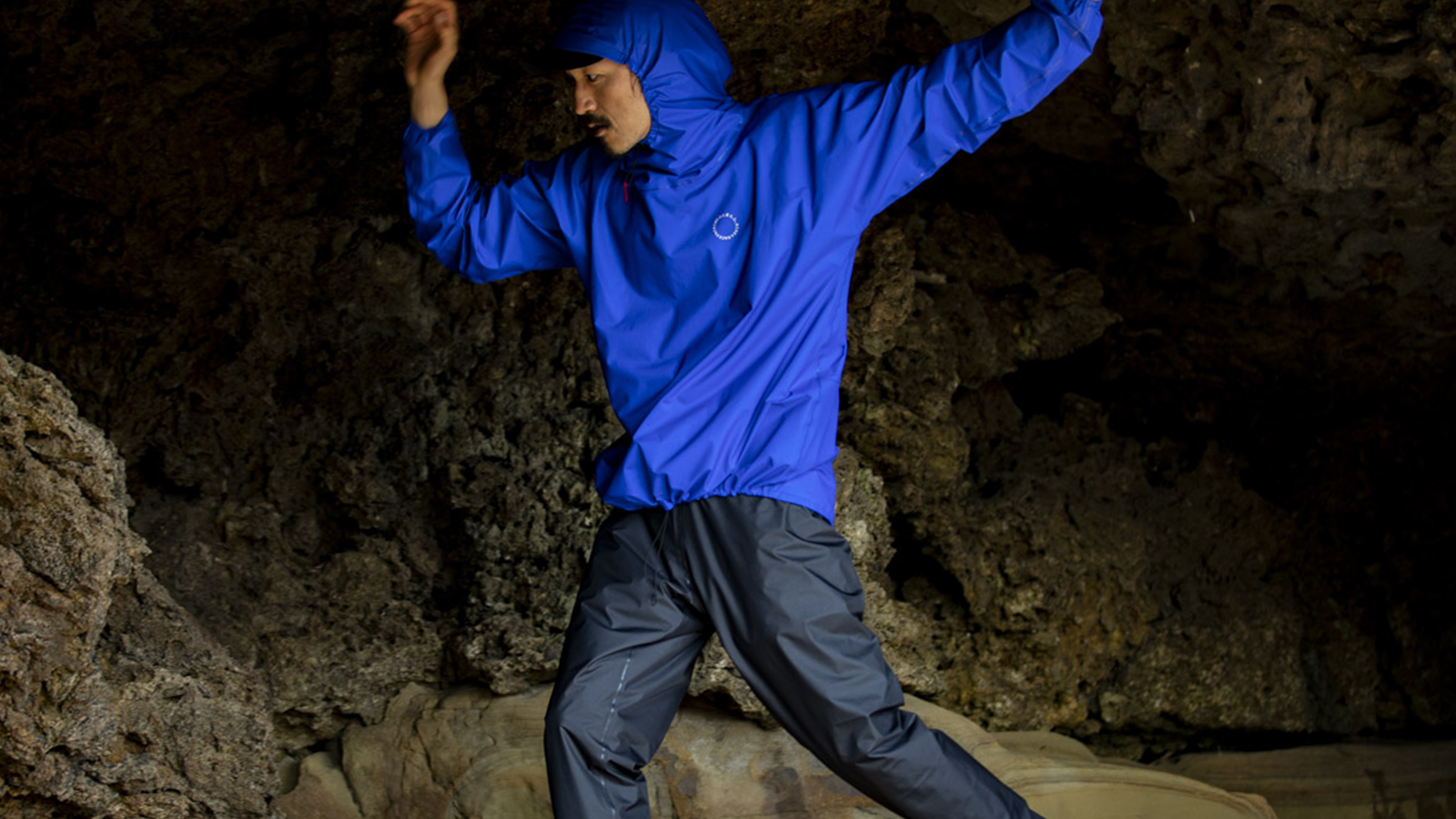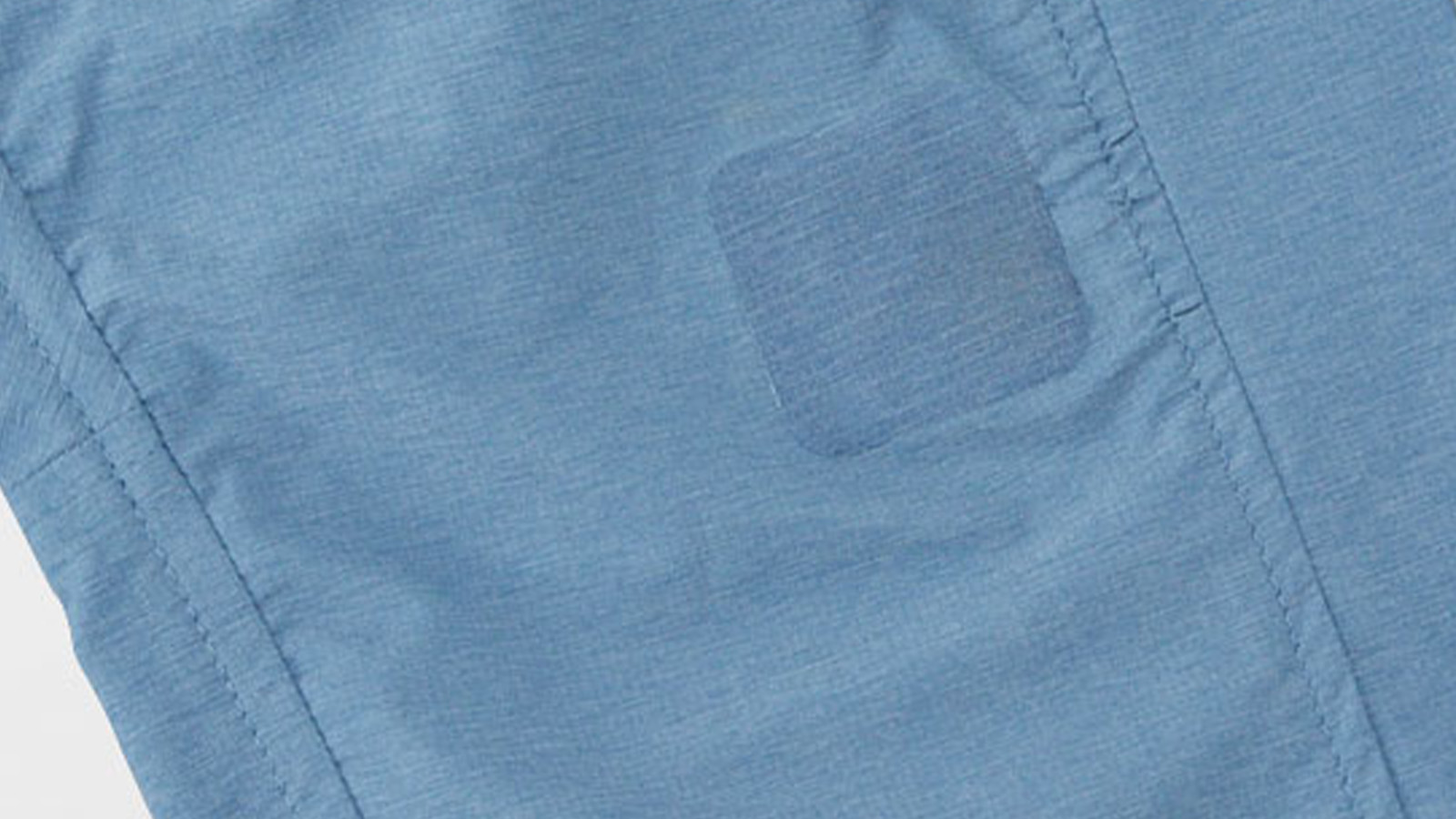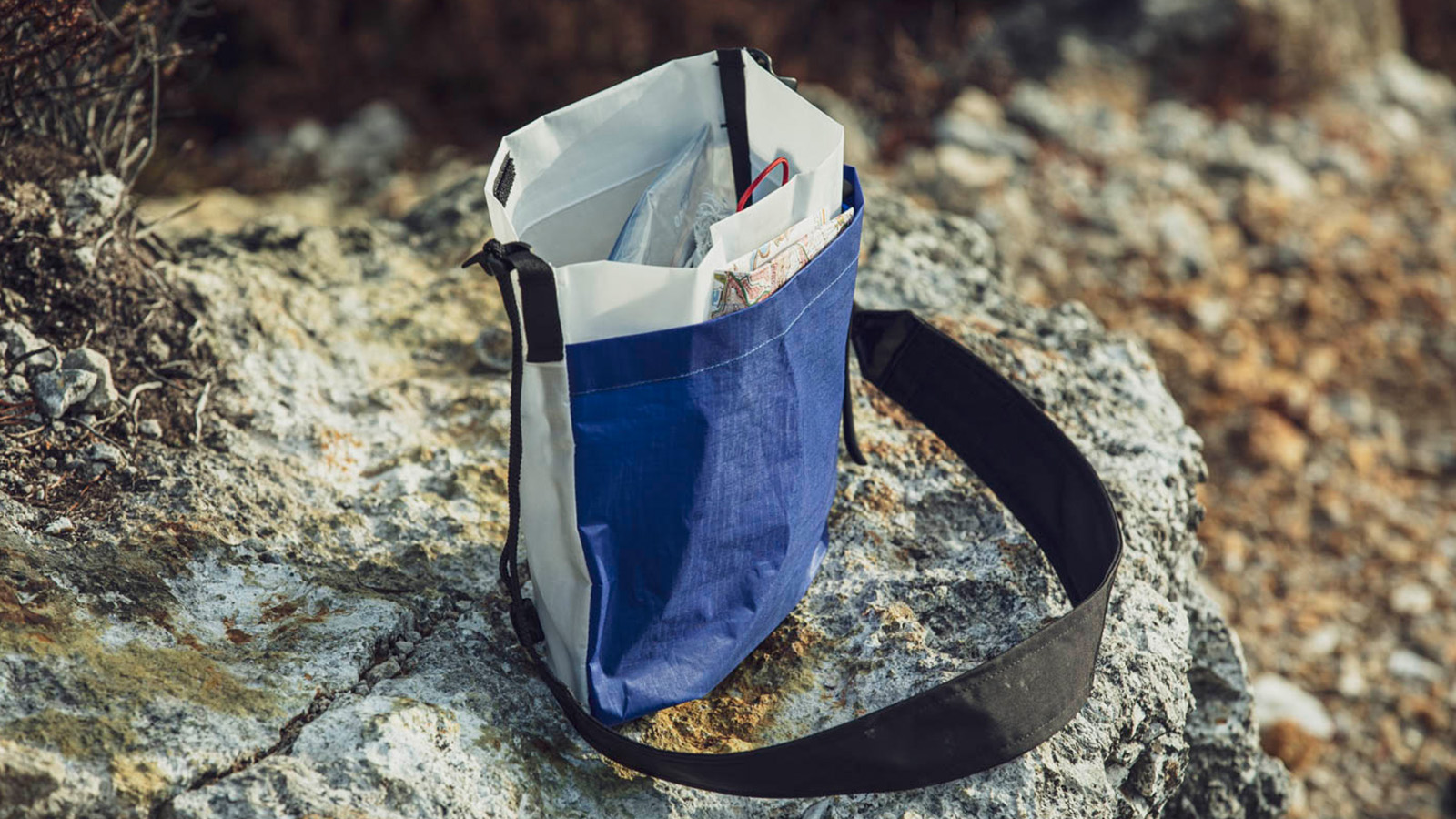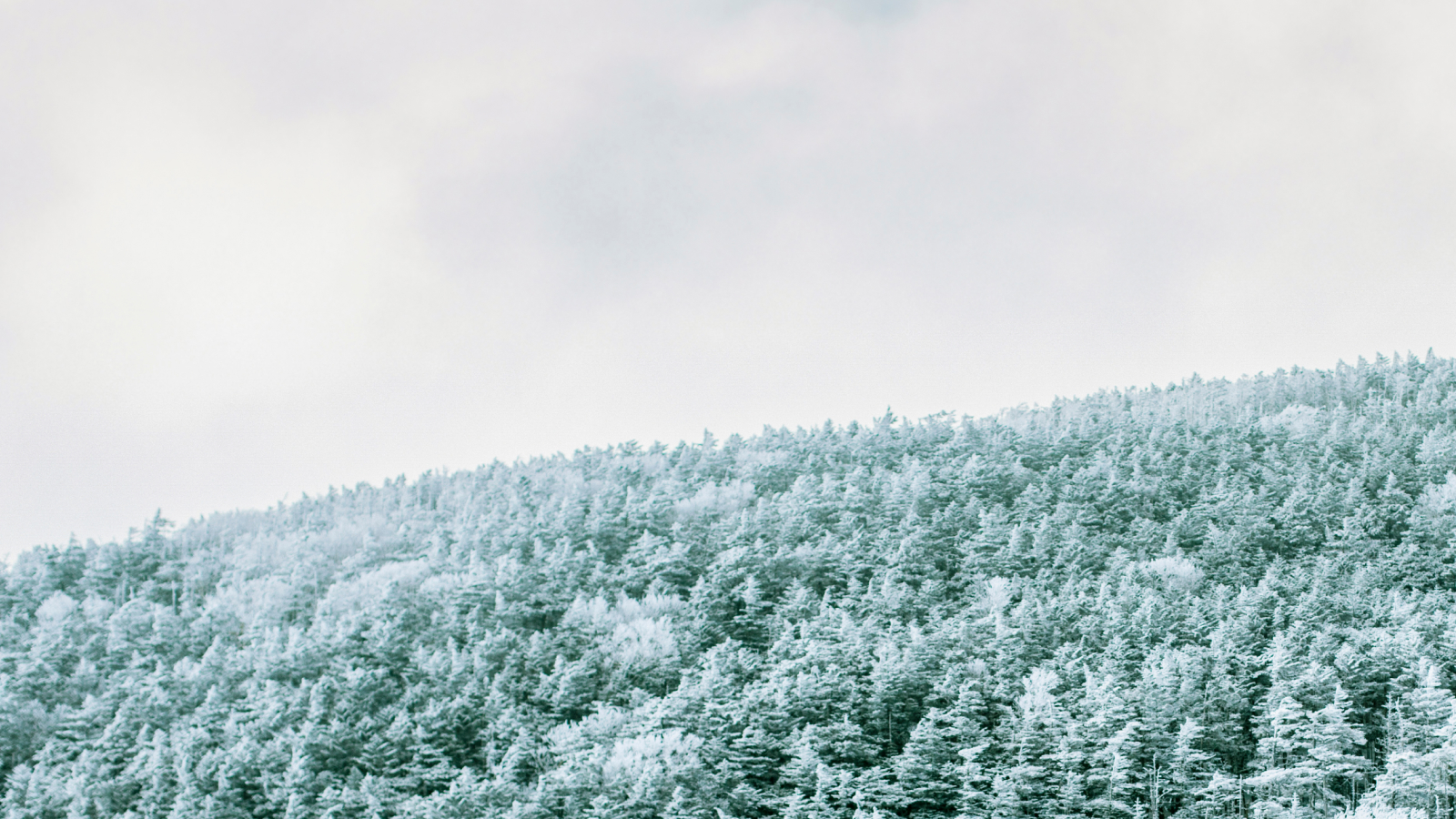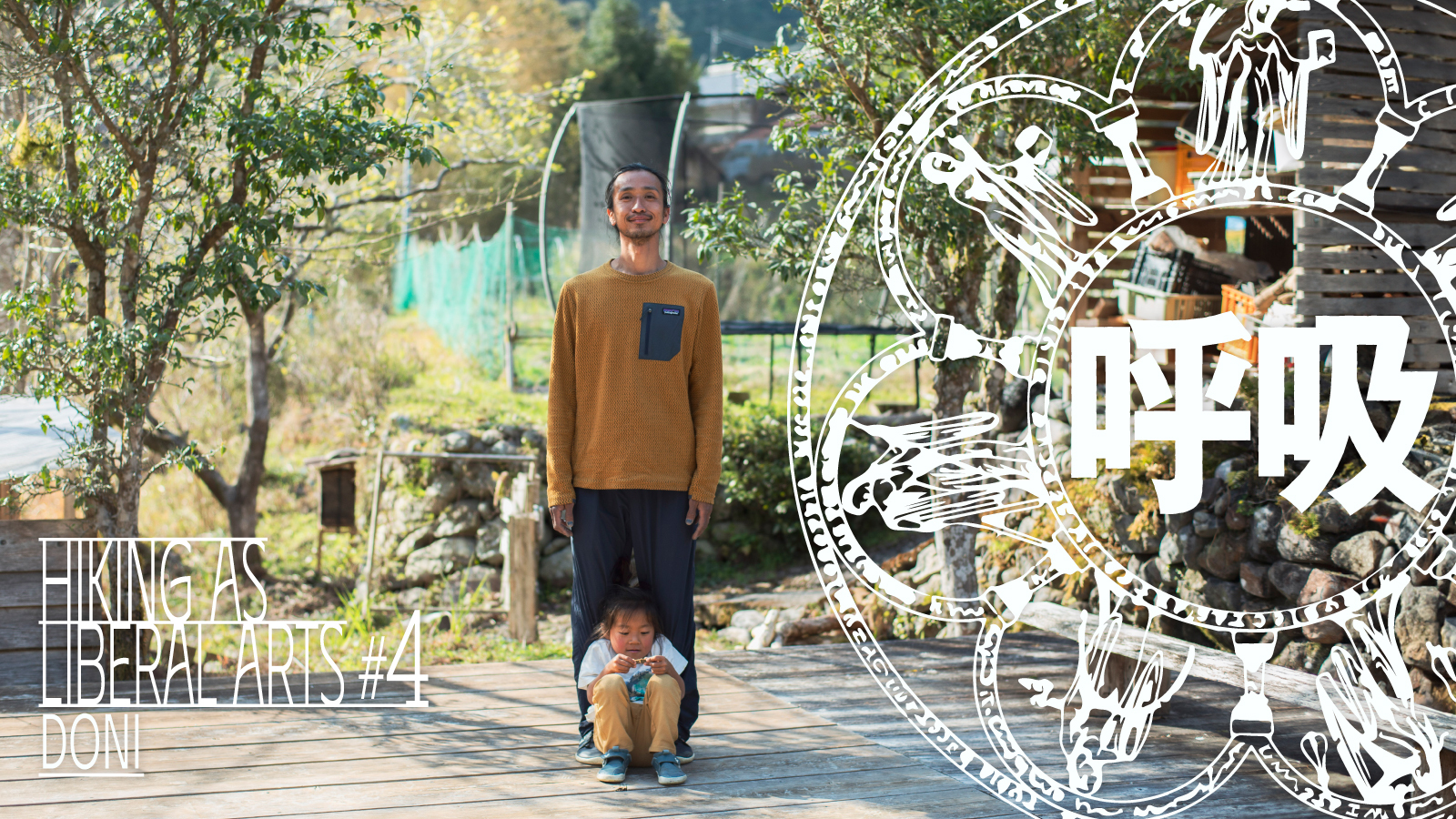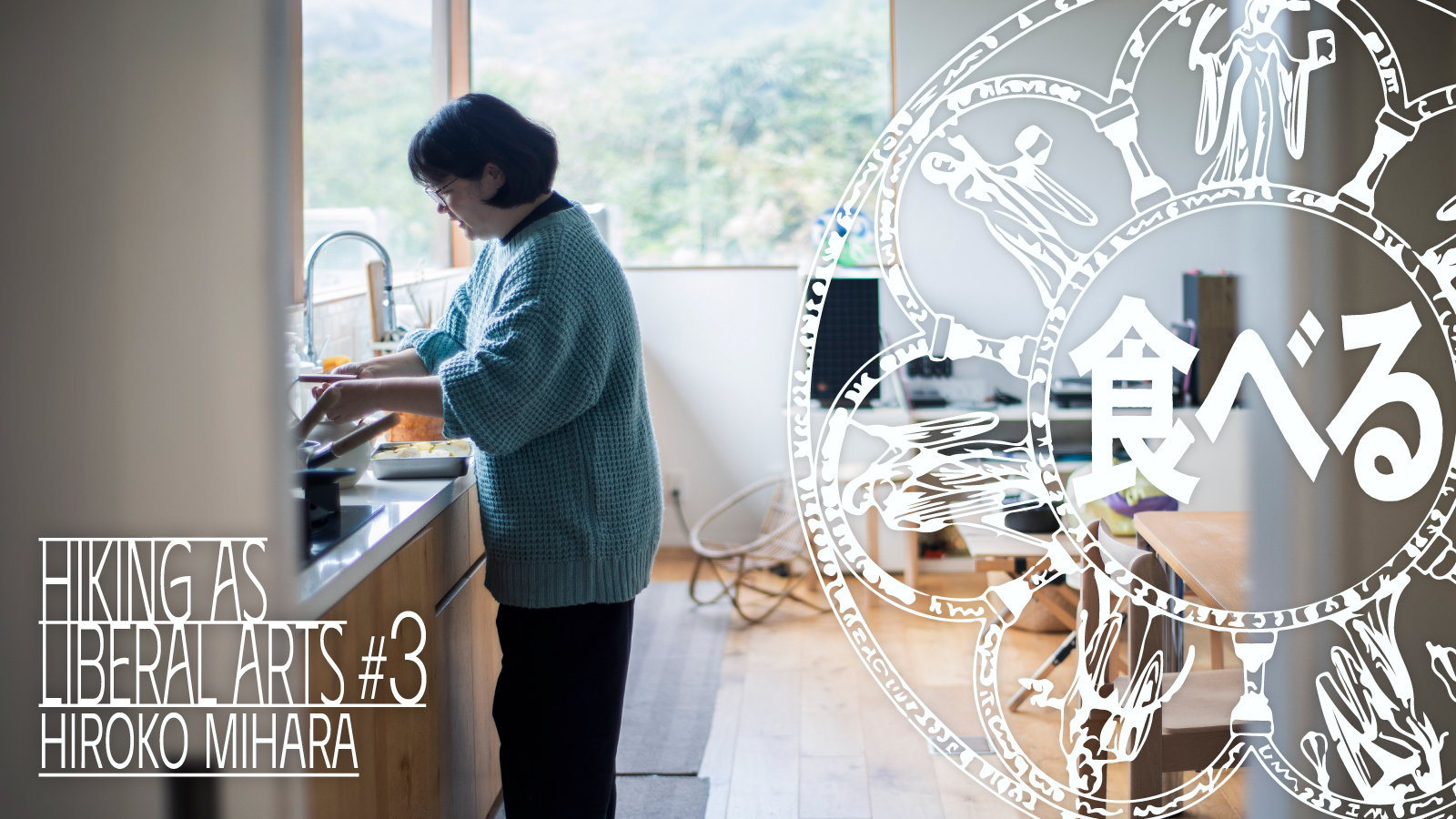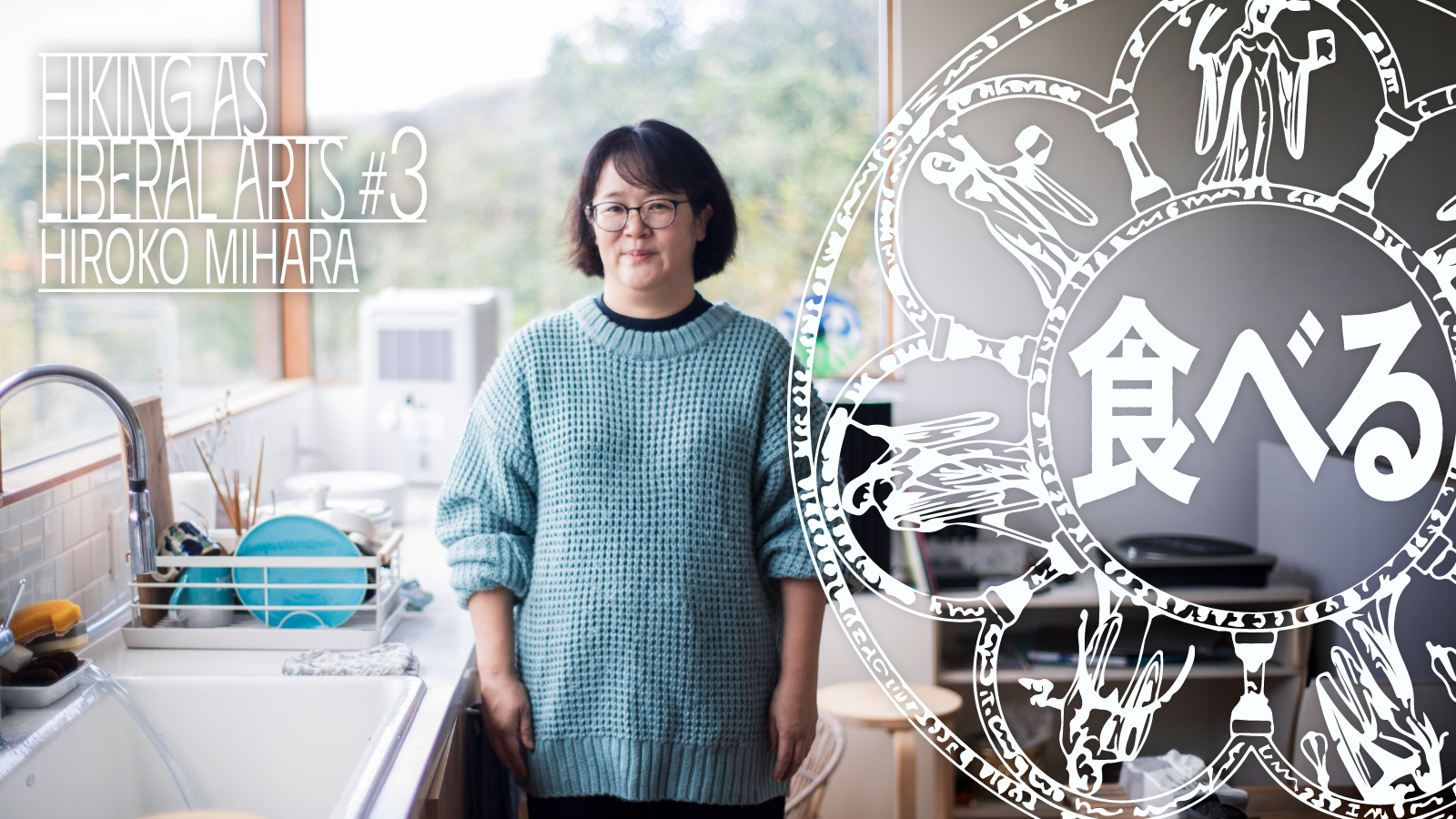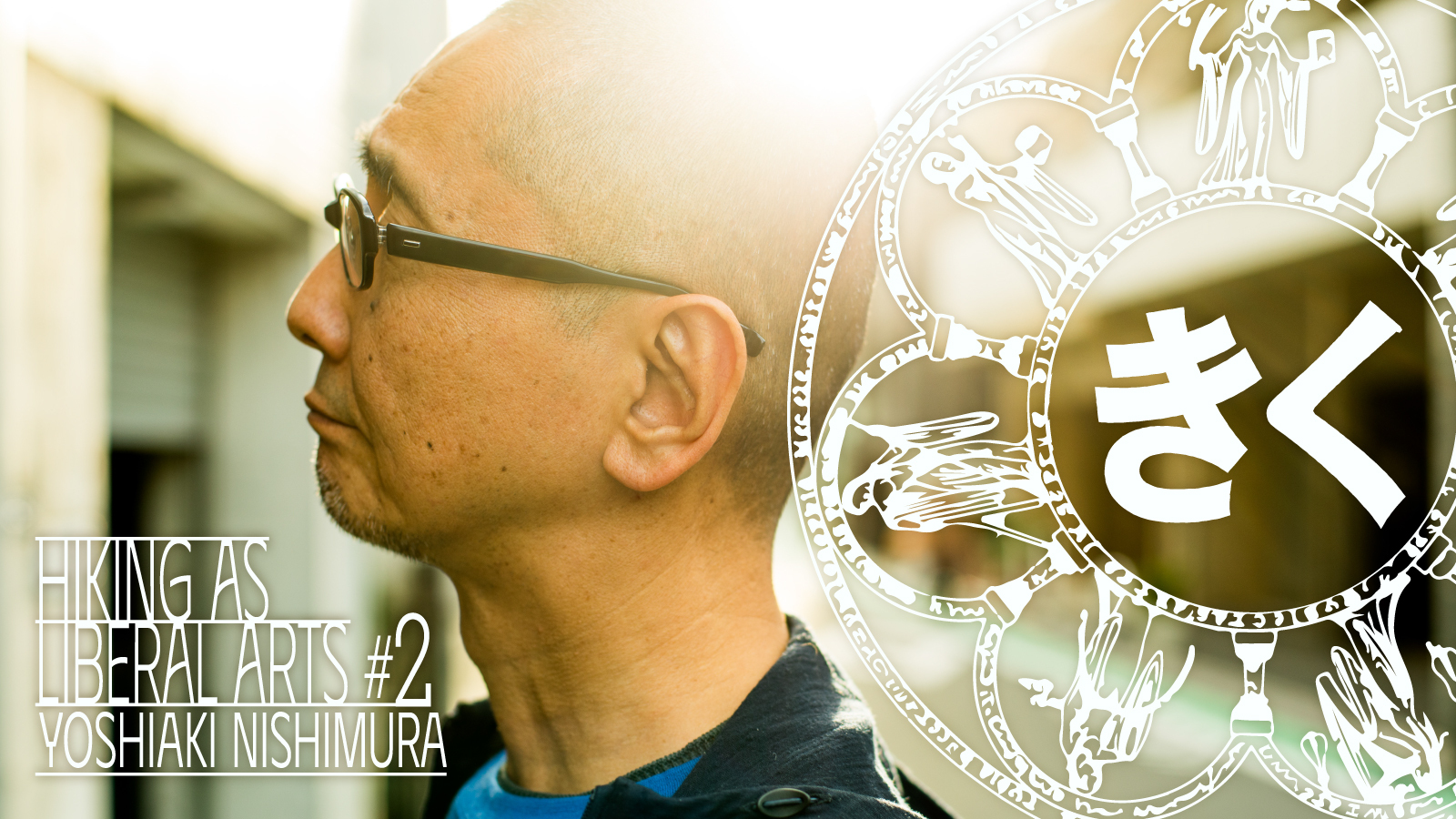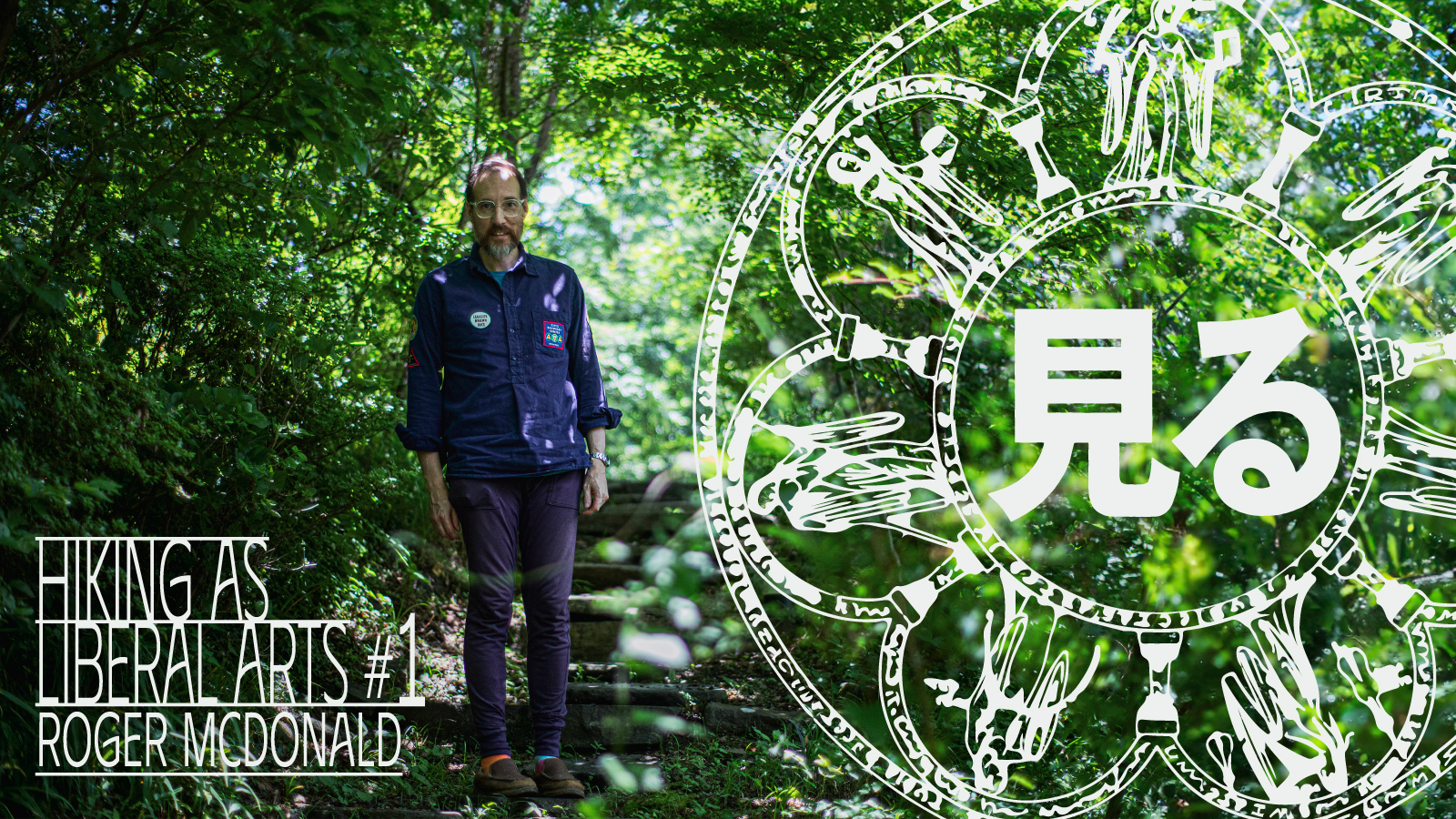DONI “Breathing” #2
Composition/Writing: Takuro Watanabe
Editing/Photography: Masaaki Mita
DONI “Breathing” #2
Composition/Writing: Takuro Watanabe
Editing/Photography: Masaaki Mita
In the HIKING AS LIBERAL ARTS series, hosted by Hideki Toyoshima, Yamatomichi HLC (Hike Life Community) director, we consider hiking as a liberal art, a field of study that liberates individuals from preconceived notions and norms, empowering them to act based on their personal values. This series delves into physical aspects of hiking ー seeing, hearing, eating, breathing ー for clues to exploring the value of and potential that extends beyond hiking.
This is Part 2 with our fourth guest in the series, DONI, a yoga practitioner and teacher who runs the remote retreat Kuo Green Village in Kaiyo, a small town in Tokushima prefecture, on Japan’s southwestern main island of Shikoku. In Part 1, we discussed DONI’s plans to open a free school; how hiking and yoga transformed his life; and the mysteries of and differences between conscious and unconscious breathing. We continue our conversation about breathing by asking how it connects us with the natural world.
Inhale, exhale
ーI now understand that breathing is an essential way of circulating energy. When you say “circulating” do you mean that something stuck or stagnant begins to flow?
Exactly. Take this river in front of us. It’s clean enough to drink from. But if there’s even a small weir or some stones disrupting the flow, the water can become stagnant in spots, turn murky and attract insects. Once that happens, the water is no longer drinkable. It’s the same with energy. Once the flow stops, decay begins to set in. That’s the law of nature. Breathing works the same way.
Inhaling is important, but exhaling ー letting it out ー is just as crucial. If you only inhale, energy doesn’t circulate properly. The same goes for only exhaling. A balance between inhaling and exhaling keeps energy flowing within the body.
By rearranging the stones in the river, the leaves that were blocking the flow start to drift away, and clean water returns. Our bodies are no different. When your breath is balanced, stuck emotions or thoughts also begin to move and flow.
ーSo inhaling and exhaling function as a pair and are equally important.
Exactly. Both matter.
ーI’d love to hear more about breathing techniques. From what little I know of yogic breathing (also known as pranayama, which is conscious and controlled breathing to match the rhythm of yoga postures), most methods seem to emphasize breathing through the nose rather than the mouth. Is there a reason for that?
There are plenty of explanations of this sort if you look them up. I try not to rely too much on only that kind of logic. What’s important is how you feel. It’s not about moving your body based on the information you’ve heard from someone else ー it’s about being in sync with your natural surroundings and sensing things on your own. As for me, I don’t believe that breathing through the mouth is necessarily a bad thing. The nose and mouth each have their own roles. Nasal breathing allows for more delicate control of airflow and more mindful and attentive breathing.
ーI can relate to that. I just tried both while listening to you. The mouth definitely feels like a wider tube that’s different from the nose.
Exactly. The nasal passage is narrower, so when you want to exhale all at once, it’s often more appropriate to do so from your mouth. Even sighing is an important act of releasing what’s been building up inside. Of course, there are things that mouth breathing alone can’t handle.
The nose has its own specific role. The right and left nostrils have different functions, and when their balance is off, it affects us emotionally and physically. Yogic practices like alternate-nostril breathing (known as nadi shodhana, which involves inhaling and exhaling through one nostril while the other is gently closed, and then alternating with the other nostril) tap into this. But I try not to get too caught up in names or labels. What I value is the feeling of circulating breath through my entire body.
Observing your breath is the first step to knowing yourself. And surprisingly, many people don’t really know how to use their breath in this way.
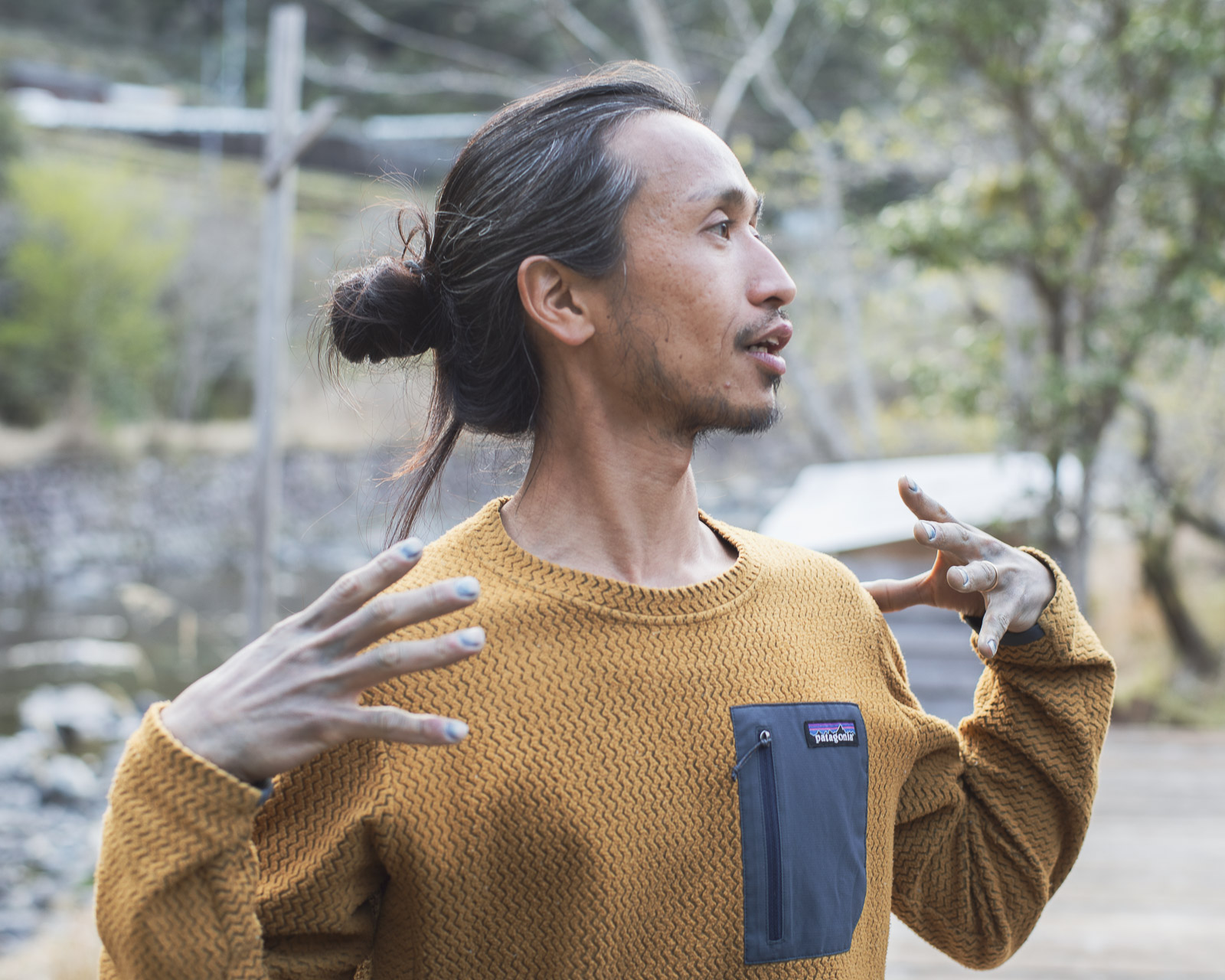
ーI’d love for you to share a breathing technique or two with us.
There are many methods, but I think breathing first thing in the morning is one of the best practices. Like the rhythm of inhaling and exhaling, this world is full of cycles ー full moon and new moon, dawn and dusk. Our bodies are in tune with these rhythms. The purest time of day is undoubtedly at daybreak. At night your body resets, and the energy in that first moment after waking is truly special.
Before our child was born, my wife and I used to get up around 2 a.m. to practice yoga. Once you experience the clarity of that time of day, you become completely hooked ー you just want to wake up early. Even the insects and birds are still asleep, and there’s this incredible silence. It’s like the universe itself is waking up. The moment feels like a first bath of the day. You breathe in gently and quietly, then breathe out just as quietly. It sounds simple, but it’s actually quite difficult. When your body absorbs the energy of that optimal state, your entire day is entirely different.
ーIs there a specific way to breathe mindfully and deliberately?
Keep your mouth closed and let the breath fill your entire body. As you inhale, start by filling your lower abdomen, then your chest, then your collarbones and shoulders, gradually working upward. Do the reverse when you exhale. Release your breath deliberately: from the shoulders, collarbones, chest and finally the lower abdomen.
ーSo you’re telling me to maintain awareness of every breath I take?
In yogic terms, I guess you’d call that “complete breathing”. But what really matters is circulating the breath throughout your entire body. And if you don’t consciously practice breathing, you’ll forget how to breathe properly. Most of the time, our breathing only uses the upper parts of our body. In some cases, it might feel like we’re only breathing from the neck up. But I believe real breathing is something that flows from the crown of your head to your fingertips and the soles of your feet ー it involves the whole body.
I’m not a medical expert. But from personal experience, I can say that deep, intentional breathing spreads energy throughout the body. By directing your awareness, you start to feel your inner pathways opening up. It’s a sensation of visualizing and having your consciousness reach those places in your body.
How to practice complete breathing

- Sit in a comfortable position with your back straight. Slowly exhale completely through your nose, drawing your belly inward.
- Inhale through your nose, naturally expanding your belly (diaphragmatic breathing).
- Continue inhaling through your nose, letting the breath expand into your chest (thoracic breathing).
- Imagine a bird spreading its wings as you draw an even deeper breath, allowing your shoulders and collarbones to gently lift (clavicular breathing). Once you’ve inhaled fully, hold your breath for 2 to 3 seconds.
- Slowly exhale through your nose, releasing the breath from your shoulders and collarbones.
- Continue exhaling, allowing your chest and ribcage to gently contract.
- Finally, exhale from your abdomen through your nose in a slow, complete release.
ーWhat exactly does “visualization” mean in this context?
It’s about awareness. Can you direct your attention to the crown of your head or the tips of your fingers and toes? When your awareness reaches those places, energy also begins to flow there. Through breathing and meditation, you gradually develop the ability to “visualize” in more granular detail ー right down to the organs.
It might sound strange, but imagine having a needle stuck into your internal organs without anesthesia ー it would hurt. We just don’t usually have conscious access to sensations there.
ーSo “visualizing” means being able to feel something by directing your awareness to it.
Exactly. “Visualizing” gives you that access. In everyday life, that’s incredibly difficult. Just like how our breathing is often shallow, we don’t use our body to its fullest potential. We don’t “visualize” much of it: Our awareness doesn’t reach certain areas, and in turn, we can’t access the sensations or energy there.
There are many reasons for this ー emotional or physical blocks. Habits and conditioning limit often our perception. Even the act of “visualizing” takes practice.
Athletes, for example, often have very keen awareness of the muscles or fingers they use. That’s because they’re engaged and present. But most people don’t apply that level of attention to their whole body. As a result, we only use and perceive what we can see, and our breath and energy flow are limited to those areas. This restricts our ability to experience comfort or well-being.
But if we begin to align our breath, posture and energy flow, pathways naturally begin to open up. It’s like how a river begins to carry away leaves when the current flows again. What was stuck starts to move. It’s the same principle.
ーThe entire natural world is breathing.
Exactly, it’s really the same thing. If we cover the earth with concrete, water and air can’t circulate ー and plants can’t take root. In nature, plants and humans coexist through an exchange of carbon dioxide and oxygen. We exhale what the plants inhale, and they release what we breathe in. It’s not a one-way relationship ー it’s a clear, mutual exchange.
That’s why, when I think about what good breathing means, I include sighs and other kinds of breaths. Every breath is part of our connection with nature, and I believe those breaths are contributing something truly meaningful ー not just to nature, but to the universe.
In other words, if we stop thinking of breathing as merely a personal act for our own health and instead view it as the role we play in nature’s larger cycle, our whole perspective changes. Of course, wanting to rebalance yourself or become healthier is valid and often the starting point. But if we stop there, we lose sight of the connection between ourselves and the natural world. It becomes a closed-off, self-contained experience.
We exist because nature exists. We feel healed in the mountains because we’re receiving something from that connection. When we breathe in a natural setting, we are both receiving and giving. If we become aware of that reciprocity, I believe it will change how we breathe and think about breathing.
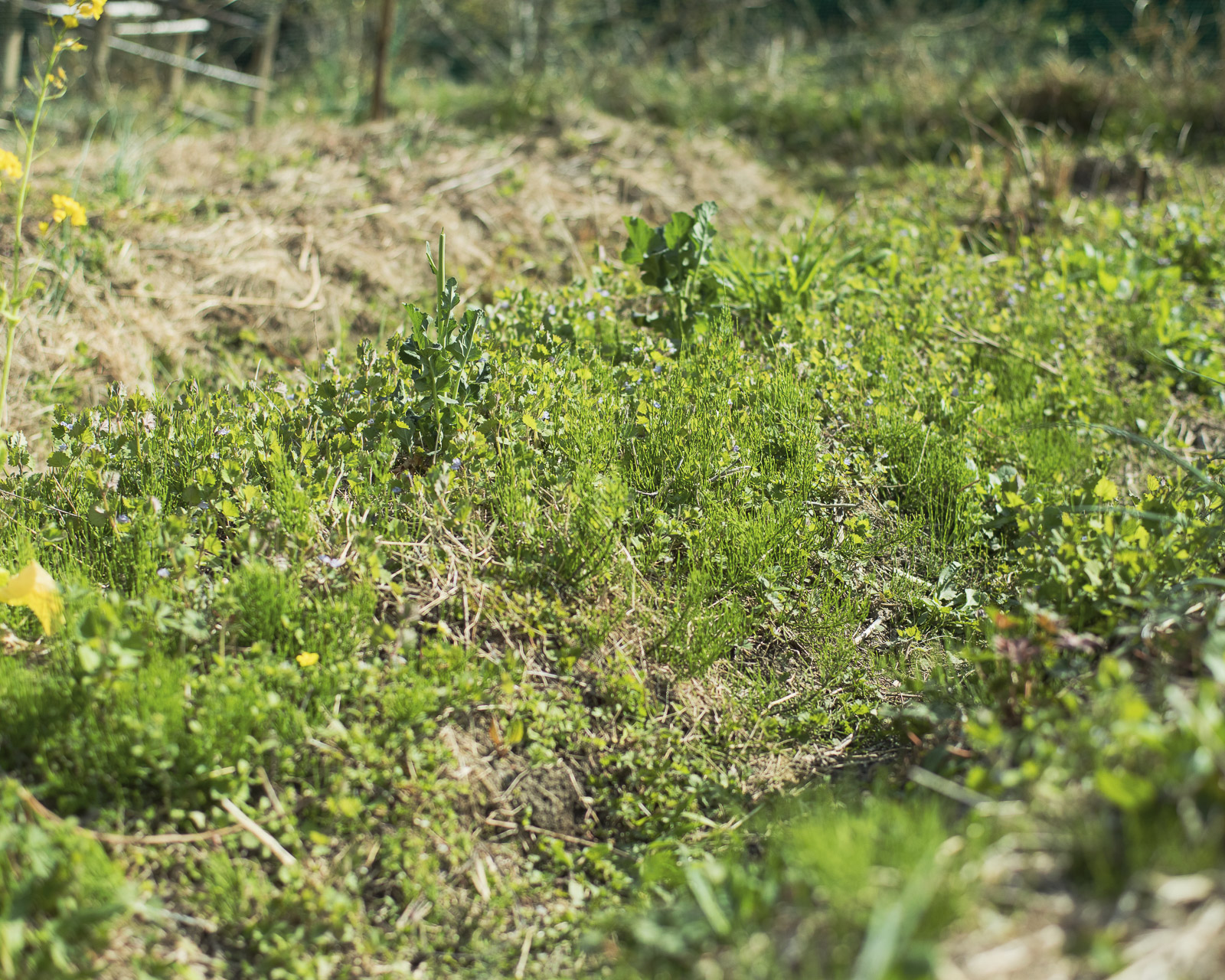
DONI grows crops without chemical fertilizers or pesticides, and doesn’t till the soil or pull weeds (which he considers nutrients for the soil). It usually looks like an overgrown field to most people (at the time of the photo, the field was idle), but DONI sees how the plants complement and support each other.
The benefits of observing breath
ーWe began talking about breathing as life-sustaining but I now see how it can become a form of self-healing.
Exactly. Activities that aim to enhance your natural surroundings ultimately are the same as working on yourself. We need to understand that we are also constantly receiving from our environment.
ーInhale and exhale. Live and die. They’re one and the same. We humans tend to focus only on living, but death carries just as much weight.
Yes. Life exists because of death. Creation happens because there is destruction. They are a set.
ーWhat strikes me is how underrated breathing is. It’s the most essential thing for living, yet rarely taught. People talk about food that’s unhealthy but no one ever tells you that you shouldn’t be breathing a certain way.
Right? We’ve observed people practicing yoga for many years and have come to sense when someone’s breathing is shallow or when someone is experiencing something emotionally or physically. When I was younger, I used to hike and I discovered how to fix my posture and expand my breathing when I’d get short of breath from leaning forward with a heavy pack. When your breathing becomes shallow, your field of vision narrows. Just by filling your chest with air, you can expand your view of the world. You’re taking in energy, after all. People who stand tall and breathe deeply rarely seem gloomy, don’t you think?
ーSo when you become aware of your breathing, your posture improves. It’s important to remember to breathe. And it begins with awareness?
Exactly. For many people, there’s a familiarity to breathing but it isn’t optimal. Which is why it’s crucial to observe your breathing. Wake up five minutes earlier than usual and take time to do this. That alone will change how you perceive the world. Yoga is similar. It isn’t just healthy stretching ー it’s time spent observing yourself.

ーToday’s conversation has been so enjoyable. I always thought breathing was important, but now I see it’s actually everything.
You could say that breathing is the first act through which a person connects with the outside world. A baby’s umbilical cord connects it to its mother. Once the cord is cut, the baby breathes to establish a connection to the world that it’s emerged into.
ーIt really is about connection. Hiking is about connecting with the mountains. I realize now that it’s a form of exchange with the mountain.
Yes, it’s because we can connect that any of this is possible. We live through connection. Without connection, we can’t survive. That goes for all living things.
Someone from India once told me that before going on a pilgrimage, they were told: “Don’t take money.” If you have money, you can stay in hotels and buy what you need. Your journey ends there. If you have no money, you’re forced to talk to people, ask for help ー and that’s where real connection is born. You begin to observe nature more closely. You start to really listen ー to the sound of the wind, the rustle of grass. You have to think about where you’ll sleep at night. You’re reawakening those sensations.
ーThat perspective ties in directly with ultralight hiking.
When you carry too much, there are things that you don’t see. When you carry less, there’s a whole world that becomes visible to you.
Indian philosophy teaches us the idea that “I am not this body”. It means not limiting yourself to your body. When you believe you are your body, you fear death. You have the feeling that everything ends. But when you see that you are part of a bigger whole, your perspective widens. Everything that exists has a role. Fulfilling that role is what establishes a connection to the whole.
ーIt raises the question of what the self is.
Yes. We tend to think of ourselves in terms of “my body” and “my mind”. But those aren’t the essential self. People think they are the mind that they observe, but it’s the observer of the mind that is the real you.
There’s no need to reject your emotions. Emotions are like grass growing in a field: They exist. When you get caught up thinking that you don’t like yourself, it’s a sign that you’ve lost sight of yourself. Anger and jealousy aren’t bad emotions. There’s meaning to your feeling those emotions. As you observe your emotions, they start to change. Like weeds in a field: At first they may seem prickly, but over time they soften. The heart is the same ー it changes with time. What matters is whether you can see what state you’re in at this moment. The ability to do that will allow you to get closer to the truth.
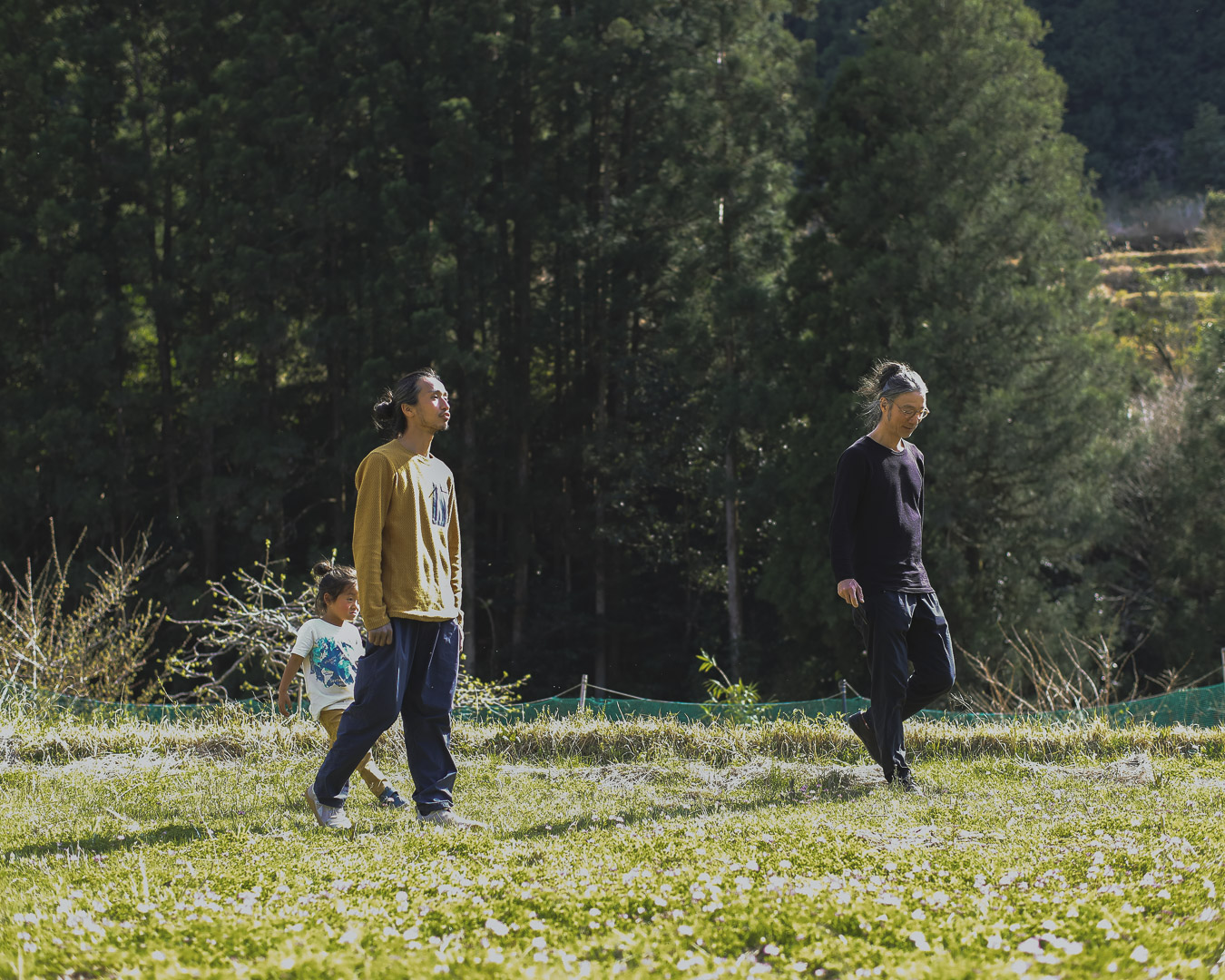
Reflections on DONI’s story
HIDEKI TOYOSHIMA
Breathing was the original topic that inspired the Hiking as Liberal Arts series. Every theme ー seeing, listening, eating and breathing ー in this series has brought new insights. As I explored the topics, I found myself reading books and joining workshops to learn more.
Here’s what I realized: This stuff is essential to life!
As I listened to DONI, the fourth guest in this series, I couldn’t help but wonder why no one taught me how to breathe when I was a kid. I’m sure readers of this series will relate.
DONI talked about his pursuit of what he loves ー the common thread that runs through all of his his wide-ranging activities ー and shared his interpretation of breathing. His ideas about breathing deeply resonated with me.
“With breathing, most people think it’s something they do. But consider this: The moment you inhale air from just in front of your face, that air becomes part of your body. Where is the boundary between you and the outside world? It’s extremely vague. We think we are the ones breathing, but breathing doesn’t happen in isolation ー the act connects us to the world around us,” he said.
It was thrilling to hear him speak about visualizing parts of the body while breathing. It reminded me of how Roger McDonald, our first guest in this series, described the concept of Deep Looking. DONI’s idea that breathing reflects our role within and connection to the natural world was enough to transform the way I breathe for good.







